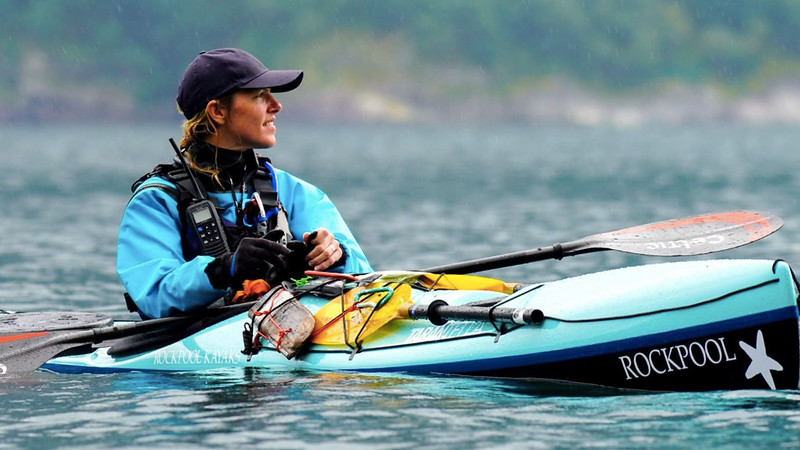Rockpool Kayaks are a small sea kayak manufacture based on Anglesey, Wales. They produce impeccably well made boats in an array of colours, fades and glitters, often with the odd starfish thrown in too. Their designs can be divided into two main groups; conventional British sea kayaks and fast sea kayaks. They produce both in a range of shapes and sizes but which one is right for you. Read on for our complete guide to their current range.
Isel
Length 513cm (16’10”) Width 53cm (21”) | Avg Paddler ≈ 170cm (5’6”) 70kg (155lb)
The Isel is a multi purpose sea kayak for small to medium paddlers. As a day boat it is fairly fast yet still reasonably manoeuvrable and as a multi day boat it can comfortably carry enough for overnighters and with a bit of consideration when packing it can do week long expeditions. It is stable for the size of paddler it is designed for due in part to its width but also to the shallow V hull under the seat and the fairly hard chines that lead up to square sides. It turns beautifully when over on its edge, particularly with the paddler leaning forwards to engage the wider part of the hull just forwards of the seat.
Bach Eto
Length 515cm (16’11”) Width 54cm (21.4”) | Avg Paddler ≈ 180cm (5’10”) 81kg (180lb)
The Bach Eto is a multi purpose sea kayak for medium to large paddlers. Capable of carrying enough kit for a carefully packed week long expedition yet still able to be thrown around as a reasonably playful day trip boat. Again it turns well on its edge when you lean forwards as this releases the stern. It has all the same features of the Isel but with the addition of the forward day hatch. This can slightly impede entry into the boat for larger footed paddlers but it is well worth it for the convenience of easy access snacks. For more info see the Full Review: Rockpool Bach Eto.
G.T.
Length 544cm (17’10”) Width 53cm (21”) | Avg Paddler ≈ 190cm (6’2”) 90kg (200lb)
The G.T. is an expedition sea kayak for large paddlers. It's relatively long length makes it fast and gives it the displacement to carry plenty of kit, and the large oval hatch of the rear compartment makes light work of getting those bigger items in. It's fairly narrow width means it doesn't have the sort of stability to suit beginners but as an expedition boat it isn't designed for them anyway. However it is a good match for the more experienced paddler particularly when loaded as its stability increases then. Compared to the Isel and Eto it has softer, more U shaped chines around the cockpit which make it easier to put on edge to turn. This is useful for the more subtle edging required to keeping a boat running straight, which again is ideal in an expedition boat without a rudder.
Menai 18
Length 556cm (18’03”) Width 53cm (21”) | Avg Paddler ≈ 198cm (6’6”) 100kg (220lb)
The Menai 18 is an extra long sea kayak for extra large paddlers to do extra long distances with extra amounts of kit. It is the longest sea kayak in production and this makes it fast. It isn't as fast as the plumb bowed Taran, as that has a longer waterline, but for a conventional designed sea kayak it is quick once it is up to pace. It's narrow width helps with speed too but it also has a flat section of hull under the seat which gives it back some stability, which is needed for the size of paddler it is designed for. This flat section. with relatively hard chines, also helps give it back some manoeuvrability both for static turns and when moving and on edge. The hull also features some channels that as well as channeling the water flow provide extra stiffness.
The Taran's

Taran means Thunder in Welsh and these boats certainly have caused a storm as they are such a radically departure to the conventional British sea kayak design. With their plumb, high volume bow, low rocker and low volume stern, they look more like a whitewater racer crossed with a sea kayak. And this dramatic design produces some dramatic results. The low rocker and vertical ends give it a waterline length almost the same as their overall length and this makes them fast! The one small concession the designs make to give them more stability is a flat section under the cockpit that is enough to make these speed machines paddleable by mere mortals. They will never be the most stable sea kayaks, but they are stable for such fast boats.
Taran 18
Length 549cm (18’0”) Width 52cm (20.5”) | Avg Paddler ≈ 185cm (6’0”) 90kg (200lb)
The Taran is 18 foot exactly. 18 foot is the 'longer' racing class and that is what this boat is designed to do, race. However, not on the flat water that you would race a marathon boat but in the wind, waves and tide of the sea's around the British Isle's. The high volume bow is designed to lift over waves and the low stern is to reduce the windage on the back deck that causes weather cocking. Rudders are more efficient than skegs in most conditions and so this boat has the SmartTrack rudder with its solid ergonomic foot control and responsive foil-shaped blade. The Taran is a fast boat for large paddlers, with the experience to handle them. It is ideal as a fitness trainer, time trialer or a fast expedition boat and it has the credentials to support it with speed records for everything from around Anglesey to Circumnavigating the UK.
Taran 16
Length 508cm (16’8”) Width 51.5cm (20.25”) | Avg Paddler ≈ 180cm (5’11”) 82kg (180lb)
The Taran 16 does everything its big brother does but in a slightly shorter fashion. The cockpit and deck layout are the same as the full size Taran but the overall length has been reduced by 40cm. 16 foot is the 'shorter' racing class however the Taran 16 is 8 inches longer than this and so you would need to race it in the 18 foot class. However the shorter length gives you more manoeuvrability and easier handling in rough water, all for a small sacrifice in top end speed, most noticeably on flat water. These characteristics make it more suitable as a fast day boat, as well as a fitness trainer, for the medium to large paddler, with the experience to handle it. That's not to say you can't do expeditions in it too, as it does have the capacity to carry.
Tarantella
Length 508cm (16’8”) Width 51.5cm (20.25”) | Avg Paddler ≈ 170cm (5’7”) 68kg (150lb)
The Tarantella is a Taran 16 hull with a deck to fit small to medium paddlers. Smaller paddlers will alway struggle to handle longer boats as they don't have the required lever lengths and so the shorter length makes a lot of sense. The Tarantella is ideal as a fast day boat or fitness trainer for the small to medium paddler, with the experience to handle it. That's not to say you can't do expeditions in it too, as it does have the capacity to carry.
Additional info
All the Rockpool boats are designed to be reasonably neutral in the wind but this is reliant on the padder getting the seat position right for them. To understanding the importance of the seat position with regards to how the boat handles in the wind see Sea Kayaking in the Wind - Understanding the Physics.
To help get the seating position right Rockpool have developed their own system where both the seat and full plate footrest can both easily be moved backwards and forwards at 10mm increments in a matter of minutes. This is all done without any fittings going through the hull anywhere on the boat to reduce the chances of leaks developing. The backrest is also cleverly integrated with the seat to prevent it dropping down when getting in. The foam hip pads, which are located within neoprene pockets, can be adjusted to fit.
They have also designed their own skeg system. As you would expect, this is an innovative design which uses a skeg cable under tension rather than compression. This means that the if the skeg is inadvertently left down when landing - the skeg slider is drawn back as the skeg is forced back into its housing, rather than causing the cable to kink. The skeg blade is quite small, but this is fine as long as you have the boats trim correct.
Explaining the numbers
When it comes to the dimensions of the boat things are fairly clear cut. However when it comes to the dimensions of the paddler things are a lot more ambigious. Rather than giving a range we have given an approximate ideal paddler size. Lots of factors can affect this though, foot size, or rather footwear size being a good example.
When it comes to weight things get even more dificult. Sea kayaks are obviously designed to carry additional weight, particularily expedition models. However paddler weight makes the boat more unstable and it is this that we are primarily looking at when we suggest an average paddler weight. If you are ok with the reduced stability you can significantly increase this number. And like wise if you are looking for increased stability a larger boat will work as long as you are ok with how the boat fits around you.
It almost goes without saying that you will only really know if you try the boat, preferably in wind and waves.
You might also like:

By Philip Clegg
With over two decades of working in the sea kayaking industry, Phil can be found on a daily basis coaching for Sea Kayaking Anglesey. That's when he's not expeditioning, playing or putting kit to the test.










